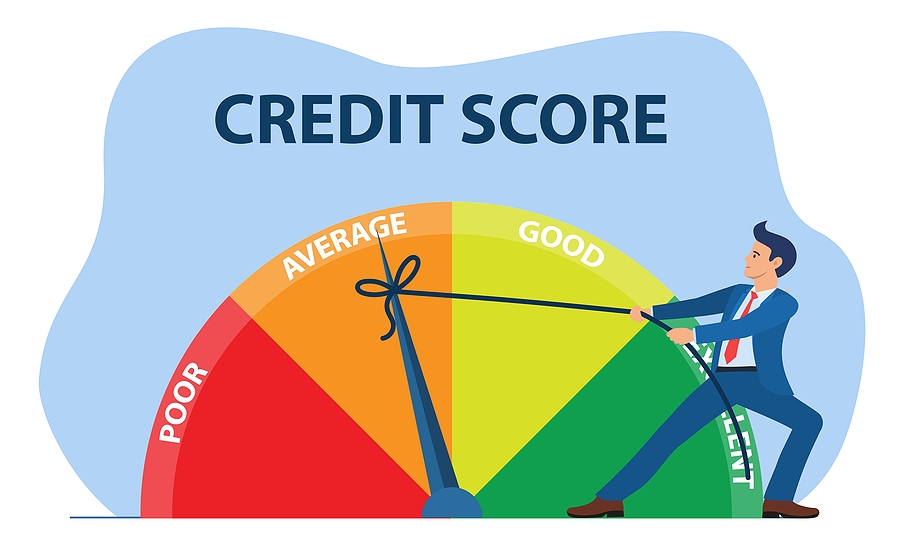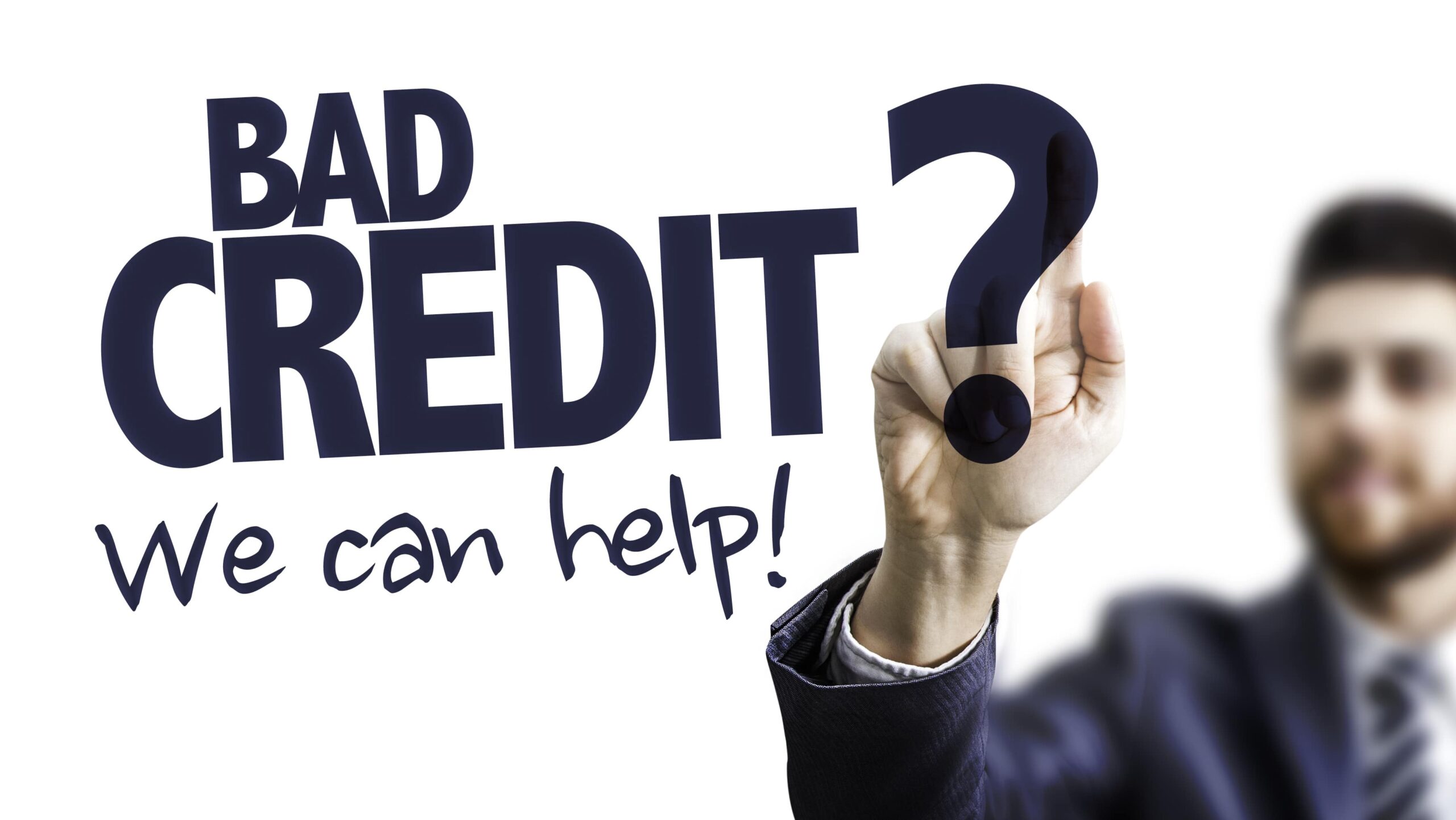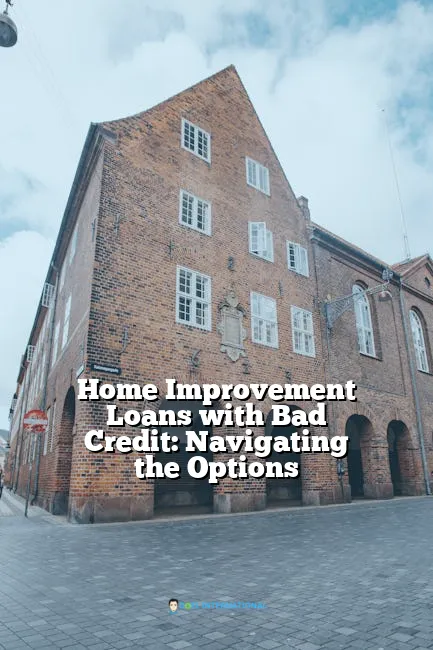Advertisement
Home improvement loan with bad credit – Home improvement loans with bad credit present a unique challenge, requiring careful consideration and strategic planning. While securing financing with less-than-perfect credit can be difficult, it’s not impossible. This guide delves into the complexities of obtaining home improvement loans when your credit score isn’t ideal, exploring the challenges, strategies, and alternative financing options available. We’ll also examine the factors that influence loan approval and interest rates, empowering you to make informed decisions and navigate the path towards achieving your home improvement goals.
The journey begins with understanding the different types of home improvement loans available, including personal loans, home equity lines of credit (HELOCs), and even credit cards. Each option comes with its own set of terms, conditions, and potential benefits. We’ll discuss the typical interest rates and repayment periods associated with these loans, as well as the potential impact of bad credit on these factors.
Understanding Home Improvement Loans: Home Improvement Loan With Bad Credit
A home improvement loan can help you finance renovations, upgrades, or repairs to your property. These loans can be a valuable tool for enhancing your home’s value, improving its functionality, or simply making it a more comfortable place to live.
Types of Home Improvement Loans
Home improvement loans come in various forms, each with its own set of terms and conditions. Here are some common types:
- Home equity loans: These loans use your home’s equity as collateral. You borrow a lump sum against your home’s value, and you repay it with fixed monthly payments over a set period. Home equity loans typically have lower interest rates than personal loans, but they carry the risk of foreclosure if you default on payments.
- Home Equity Lines of Credit (HELOCs): HELOCs are similar to home equity loans, but they provide a revolving line of credit that you can access as needed. You only pay interest on the amount you borrow, and you can make payments over a longer term. HELOCs often have variable interest rates, which can fluctuate over time.
- Personal Loans: These loans are unsecured, meaning they don’t require collateral. They can be used for various purposes, including home improvements. Personal loans typically have higher interest rates than secured loans like home equity loans.
- FHA 203(k) Loans: These loans are specifically designed for home improvement projects, especially those that address health and safety issues or make the property more energy-efficient. They can be used to finance both major renovations and minor repairs. FHA 203(k) loans are offered by FHA-approved lenders and have flexible terms, including the option to roll the loan into your existing mortgage.
- Cash-Out Refinancing: This option involves refinancing your existing mortgage for a larger amount, allowing you to receive a lump sum of cash that can be used for home improvements. However, it’s important to consider the long-term impact on your monthly payments and overall mortgage costs.
Typical Terms and Conditions
Home improvement loans have varying terms and conditions, including:
- Interest Rates: Interest rates on home improvement loans vary depending on the loan type, your credit score, and the lender’s current rates. Lower credit scores typically result in higher interest rates.
- Loan Amounts: The amount you can borrow depends on factors like your home’s value, your income, and your debt-to-income ratio.
- Loan Terms: Home improvement loans typically have terms ranging from 5 to 30 years, with shorter terms resulting in higher monthly payments but lower overall interest costs.
- Closing Costs: Home improvement loans may involve closing costs, such as origination fees, appraisal fees, and title insurance.
Common Home Improvement Projects Financed with Loans
Home improvement loans are often used to finance a wide range of projects, including:
- Kitchen Remodeling: Upgrading appliances, countertops, cabinets, and flooring can significantly enhance the functionality and value of your kitchen.
- Bathroom Renovations: Replacing fixtures, installing a new shower or bathtub, and updating tile can create a more modern and luxurious bathroom.
- Basement Finishing: Finishing your basement can add valuable living space, creating a home office, entertainment area, or guest bedroom.
- Roof Replacement: A new roof is a major investment, but it’s essential for protecting your home from the elements and preventing leaks.
- Energy Efficiency Upgrades: Installing energy-efficient windows, insulation, or solar panels can save you money on your energy bills and increase your home’s value.
- Outdoor Living Spaces: Creating a deck, patio, or outdoor kitchen can enhance your home’s appeal and provide a comfortable space for entertaining.
Home Improvement Loans for Borrowers with Bad Credit
Securing a home improvement loan can be a significant challenge for individuals with less-than-perfect credit. Lenders often view borrowers with a history of missed payments or defaults as higher-risk, leading to stricter requirements and less favorable loan terms.
Challenges Faced by Borrowers with Bad Credit
Borrowers with bad credit encounter several obstacles when applying for home improvement loans:
- Higher Interest Rates: Lenders compensate for the increased risk associated with bad credit by charging higher interest rates. This means borrowers with bad credit will pay significantly more in interest over the life of the loan compared to those with good credit.
- Stricter Loan Requirements: Lenders may impose more stringent eligibility criteria for borrowers with bad credit. This can include higher minimum credit scores, larger down payments, or a lower debt-to-income ratio.
- Limited Loan Options: Borrowers with bad credit may have fewer loan options available to them. Some lenders may not offer home improvement loans to borrowers with low credit scores, while others may offer limited loan amounts or shorter repayment terms.
- Difficulty Obtaining Pre-Approval: Pre-approval for a home improvement loan can be challenging for borrowers with bad credit. Lenders may be hesitant to pre-approve loans without a thorough review of the borrower’s financial history.
Resources and Strategies for Finding Lenders
Despite the challenges, there are resources and strategies available to help borrowers with bad credit find home improvement loans:
- Credit Unions: Credit unions often have more flexible lending policies than traditional banks and may be more willing to work with borrowers with less-than-perfect credit. They may offer lower interest rates and more lenient loan terms.
- Online Lenders: Online lenders specialize in providing loans to borrowers with a wide range of credit scores. They often have less stringent requirements and may offer more competitive interest rates than traditional lenders.
- Government Programs: Some government programs offer home improvement loans to low- and moderate-income borrowers. These programs often have lower interest rates and more flexible repayment terms than traditional loans.
- Home Improvement Contractors: Some home improvement contractors offer financing options to their customers. This can be a convenient way to secure financing for a project, but it’s important to compare interest rates and loan terms carefully.
Impact of Bad Credit on Loan Interest Rates and Terms, Home improvement loan with bad credit
The impact of bad credit on loan interest rates and terms can be significant. Lenders use a credit score to assess a borrower’s creditworthiness, and a lower score indicates a higher risk of default. As a result, borrowers with bad credit typically face:
- Higher Interest Rates: Lenders charge higher interest rates to compensate for the increased risk associated with borrowers who have a history of missed payments or defaults. This can significantly increase the total cost of the loan over time.
- Shorter Loan Terms: Lenders may offer shorter loan terms to borrowers with bad credit. This can result in higher monthly payments, making it more difficult to manage the loan.
- Larger Down Payments: Lenders may require larger down payments from borrowers with bad credit to mitigate the risk of default. This can make it more challenging to afford the initial costs of the project.
- Additional Fees: Lenders may charge additional fees, such as origination fees or closing costs, to borrowers with bad credit. These fees can further increase the overall cost of the loan.
Alternatives to Traditional Loans
 home improvement loan with bad credit” title=”Score loans” />
home improvement loan with bad credit” title=”Score loans” />
Securing a home improvement loan with bad credit can be challenging. Fortunately, alternative financing options are available to help homeowners fund their projects. These alternatives offer various benefits and drawbacks, so it’s crucial to weigh your options carefully.
Personal Loans
Personal loans are unsecured loans, meaning they don’t require collateral. They can be used for various purposes, including home improvements.
- Pros:
- Flexible Use: Personal loans can be used for any purpose, including home improvements.
- Fixed Interest Rates: Fixed interest rates offer predictability, ensuring your monthly payments remain consistent.
- Faster Approval: Personal loan approval times are typically faster than traditional mortgages.
- Cons:
- Higher Interest Rates: Personal loans often have higher interest rates than traditional mortgages due to their unsecured nature.
- Shorter Repayment Terms: Personal loans typically have shorter repayment terms, leading to larger monthly payments.
Credit Cards
Credit cards offer a convenient way to finance home improvement projects, allowing you to pay for materials and services over time.
- Pros:
- Rewards Programs: Many credit cards offer rewards programs that can provide cashback or points for your purchases.
- Flexible Payment Options: Credit cards allow you to make minimum payments or pay off the balance in full, providing flexibility.
- Purchase Protection: Some credit cards offer purchase protection, which can reimburse you for damaged or stolen goods.
- Cons:
- High Interest Rates: Credit cards often have high interest rates, especially if you carry a balance.
- Interest Charges: Carrying a balance on your credit card can lead to significant interest charges, increasing your overall cost.
Home Equity Lines of Credit (HELOCs)
HELOCs are secured loans that use your home’s equity as collateral. They provide a line of credit that you can draw from as needed.
- Pros:
- Lower Interest Rates: HELOCs typically have lower interest rates than unsecured loans like personal loans.
- Tax Deductibility: Interest paid on HELOCs may be tax-deductible if the loan is used for home improvements.
- Flexible Draw Period: HELOCs offer a draw period during which you can borrow money, followed by a repayment period.
- Cons:
- Risk of Foreclosure: Defaulting on a HELOC can lead to foreclosure on your home.
- Variable Interest Rates: HELOCs typically have variable interest rates, which can fluctuate over time.
- Eligibility Requirements: HELOCs have strict eligibility requirements, including a minimum credit score and equity in your home.
Comparing Alternative Financing Options
| Feature | Personal Loan | Credit Card | HELOC |
|---|---|---|---|
| Interest Rates | High | Very High | Lower than personal loans, but variable |
| Repayment Terms | Short | Flexible | Long draw period, followed by a repayment period |
| Eligibility Requirements | Good to excellent credit | Good to excellent credit | Good to excellent credit, significant home equity |
| Collateral | None (unsecured) | None (unsecured) | Home equity (secured) |
| Tax Deductibility | Not typically deductible | Not typically deductible | May be deductible for home improvements |
Tips for Improving Credit Score
 bad credit” title=”Score” />
bad credit” title=”Score” />
Improving your credit score can significantly impact your chances of getting approved for a home improvement loan, and at a favorable interest rate. By taking proactive steps to improve your credit, you can increase your borrowing power and potentially save money on interest payments over the loan term.
Managing Debt
Managing debt effectively is crucial for improving your credit score. High debt levels can negatively impact your credit utilization ratio, a key factor in credit scoring.
- Create a Budget: A budget helps you track your income and expenses, allowing you to identify areas where you can cut back and allocate more funds towards debt repayment.
- Prioritize High-Interest Debt: Focus on paying down debts with the highest interest rates first, as these can accrue significant charges over time.
- Consider Debt Consolidation: Debt consolidation involves combining multiple debts into a single loan with a lower interest rate. This can simplify your repayment process and potentially reduce your overall interest payments.
- Negotiate Lower Interest Rates: Contact your creditors and inquire about lowering your interest rates.
Paying Bills on Time
Your payment history accounts for a significant portion of your credit score. Making timely payments demonstrates responsible financial behavior.
- Set Payment Reminders: Use online tools or calendar reminders to ensure you never miss a payment deadline.
- Automate Payments: Set up automatic payments for recurring bills, such as credit card payments, to avoid late fees and negative impacts on your credit score.
- Contact Creditors for Assistance: If you anticipate difficulty making a payment, contact your creditors immediately. They may be willing to work with you to create a payment plan or offer temporary relief.
Building Positive Credit History
Establishing a positive credit history is essential for improving your credit score. This involves using credit responsibly and demonstrating your ability to manage debt effectively.
- Use Credit Cards Wisely: Use credit cards responsibly by keeping your balances low and making payments on time. Avoid maxing out your credit cards, as this can negatively impact your credit utilization ratio.
- Become an Authorized User: If you have a family member or friend with good credit, ask to be added as an authorized user on their credit card account. This can help you build credit history without having to open your own credit card account.
- Apply for a Secured Credit Card: Secured credit cards require a security deposit, which acts as collateral for the card’s balance. These cards can be a good option for individuals with limited credit history, as they offer a lower risk for lenders.
Monitoring Credit Reports
Regularly reviewing your credit reports is essential for identifying and disputing any errors that may be affecting your credit score.
- Obtain Free Credit Reports: You are entitled to one free credit report from each of the three major credit bureaus (Equifax, Experian, and TransUnion) every 12 months. You can access these reports through AnnualCreditReport.com.
- Review for Errors: Thoroughly review each report for any inaccuracies, such as incorrect account information, late payments, or accounts that don’t belong to you.
- Dispute Errors: If you find any errors, file a dispute with the credit bureau. You can typically do this online, by mail, or by phone.
Important Considerations Before Applying

Before applying for a home improvement loan with bad credit, it’s crucial to carefully consider several factors to ensure you make an informed decision that aligns with your financial situation and goals. This involves thorough research, a realistic assessment of risks and benefits, and a comprehensive understanding of your affordability.
Researching Lenders and Comparing Loan Offers
It is essential to compare loan offers from multiple lenders to secure the best terms and interest rates. This involves researching various lenders, including banks, credit unions, online lenders, and specialized home improvement loan providers.
- Consider interest rates: Interest rates can vary significantly among lenders, so comparing them is essential. Lower interest rates result in lower overall loan costs.
- Evaluate loan terms: Loan terms, such as the loan duration (number of years) and repayment schedule, impact your monthly payments and total interest paid.
- Check for fees: Some lenders charge origination fees, application fees, or other charges. These fees can add to the overall cost of the loan.
- Review lender reputation: Research the reputation of potential lenders by checking online reviews, customer testimonials, and Better Business Bureau ratings.
Potential Risks and Benefits of Home Improvement Loans with Bad Credit
Taking out a home improvement loan with bad credit can be a beneficial solution for some individuals, but it comes with certain risks.
Potential Risks
- Higher interest rates: Lenders typically charge higher interest rates to borrowers with bad credit to compensate for the increased risk. This can lead to significantly higher overall loan costs.
- Stricter eligibility requirements: Lenders may have stricter eligibility requirements for borrowers with bad credit, making it more challenging to qualify for a loan.
- Potential for debt accumulation: High interest rates and a longer repayment period can lead to increased debt accumulation if payments are not made on time.
Potential Benefits
- Access to funding for home improvements: home improvement loans can provide access to funding for necessary repairs, renovations, or upgrades, even with bad credit.
- Potential increase in home value: Strategic home improvements can enhance the value of your property, potentially offsetting the cost of the loan.
- Improved living conditions: Home improvements can improve the functionality, comfort, and safety of your home, enhancing your overall living experience.
Calculating Monthly Loan Payments and Evaluating Affordability
Before applying for a home improvement loan, it is crucial to calculate your estimated monthly payments and evaluate your affordability.
- Use online loan calculators: Online loan calculators allow you to input loan details, such as the loan amount, interest rate, and loan term, to estimate your monthly payments.
- Consider your budget: Ensure that your estimated monthly payments fit within your current budget without straining your finances.
- Factor in other expenses: Account for other recurring expenses, such as housing, utilities, transportation, and food, to ensure you can comfortably afford the loan payments.
Monthly Loan Payment Calculation Formula:
M = P [ i(1 + i)^n ] / [ (1 + i)^n – 1 ]
Where:
M = Monthly payment
P = Principal loan amount
i = Monthly interest rate (annual interest rate divided by 12)
n = Number of months in the loan term
